Day 35 - Walking Along The Old Railroad Line To Obama Onsen, The Kyushu 108 Temple Pilgrimage, Japan


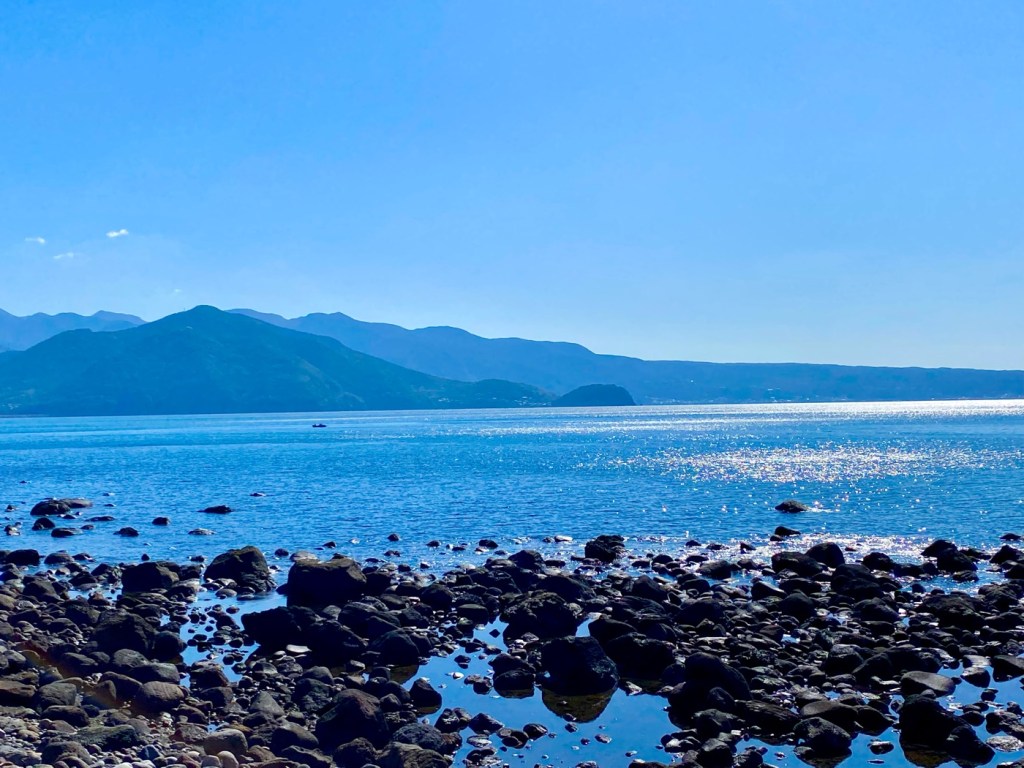

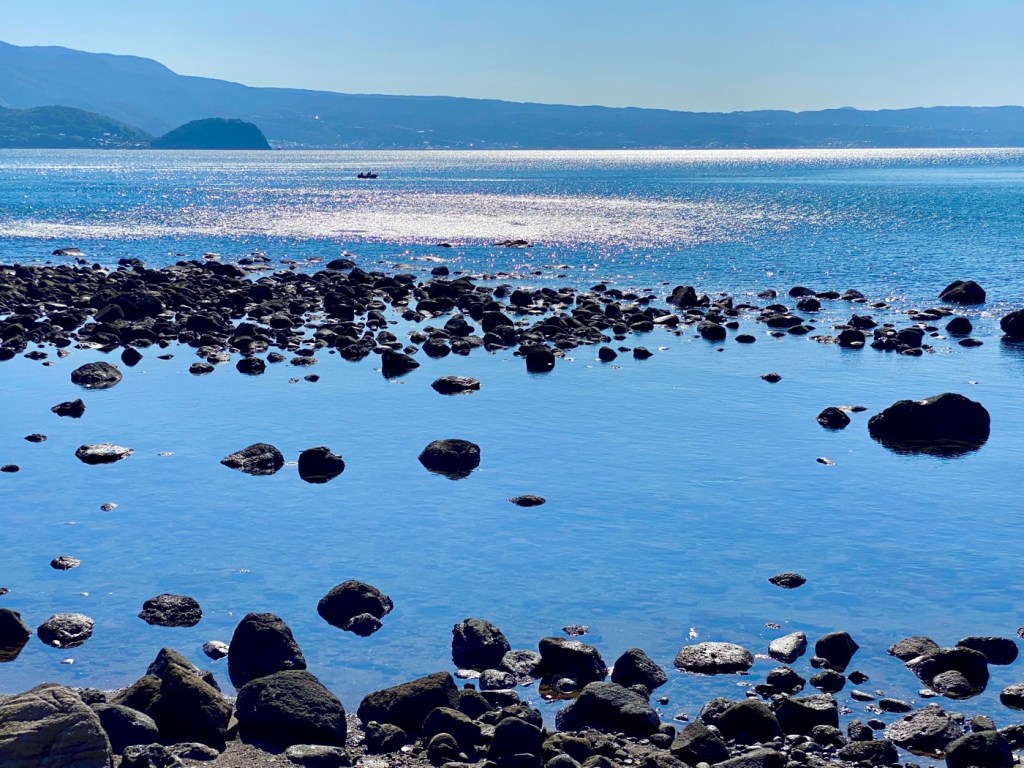



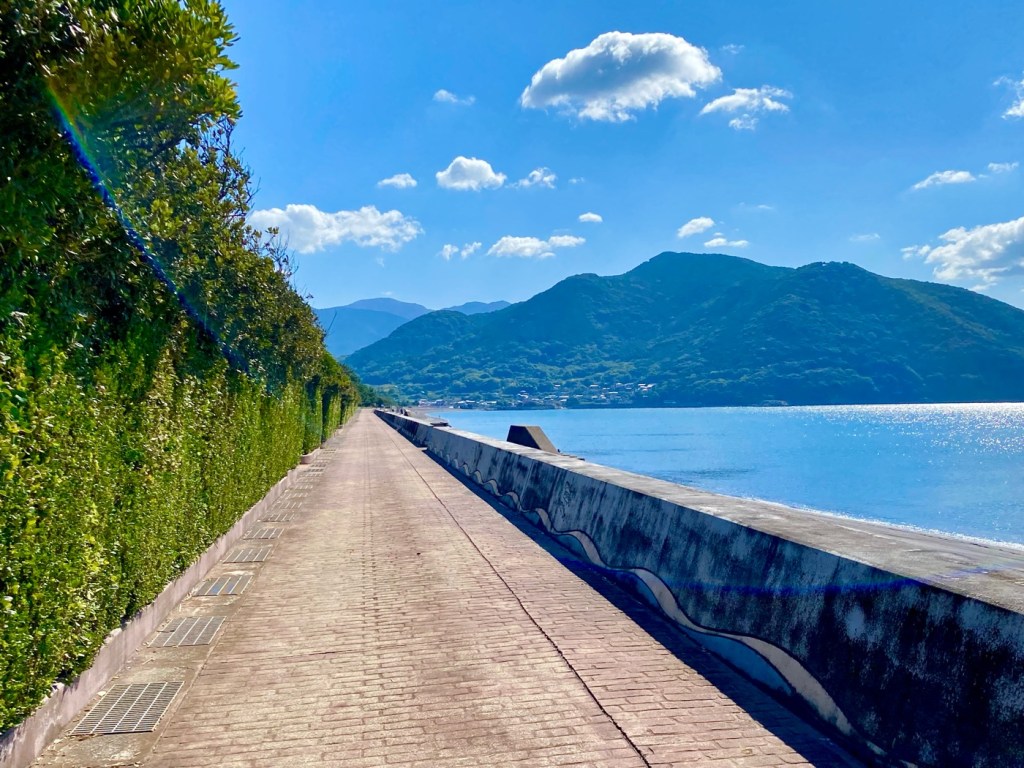





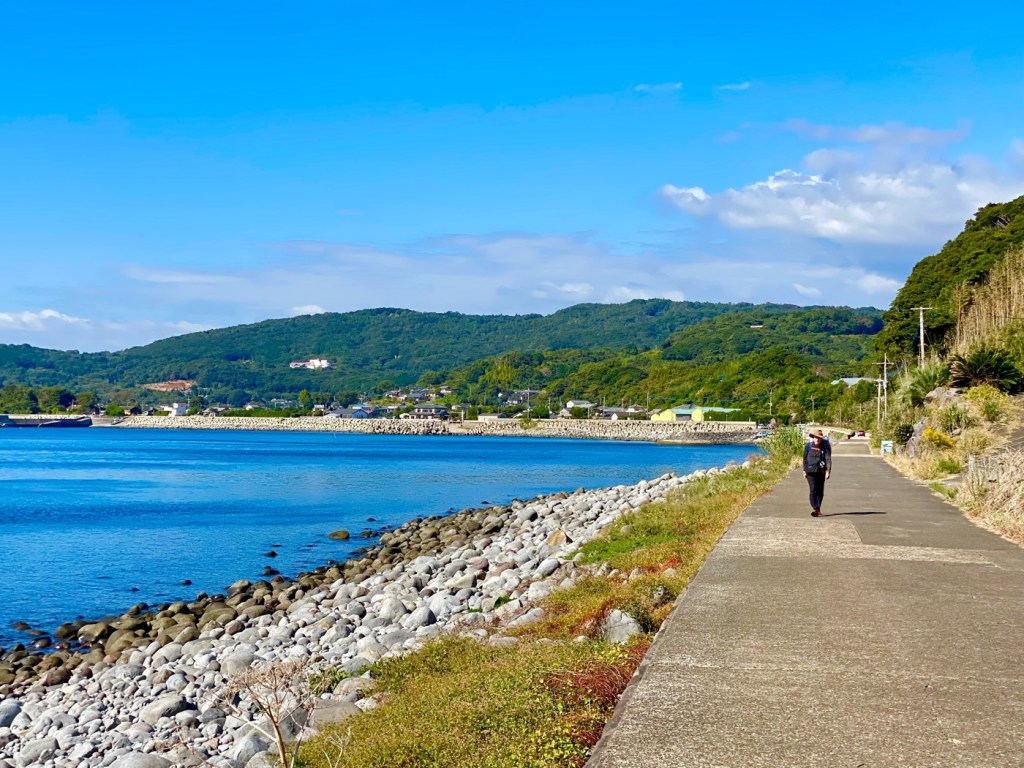
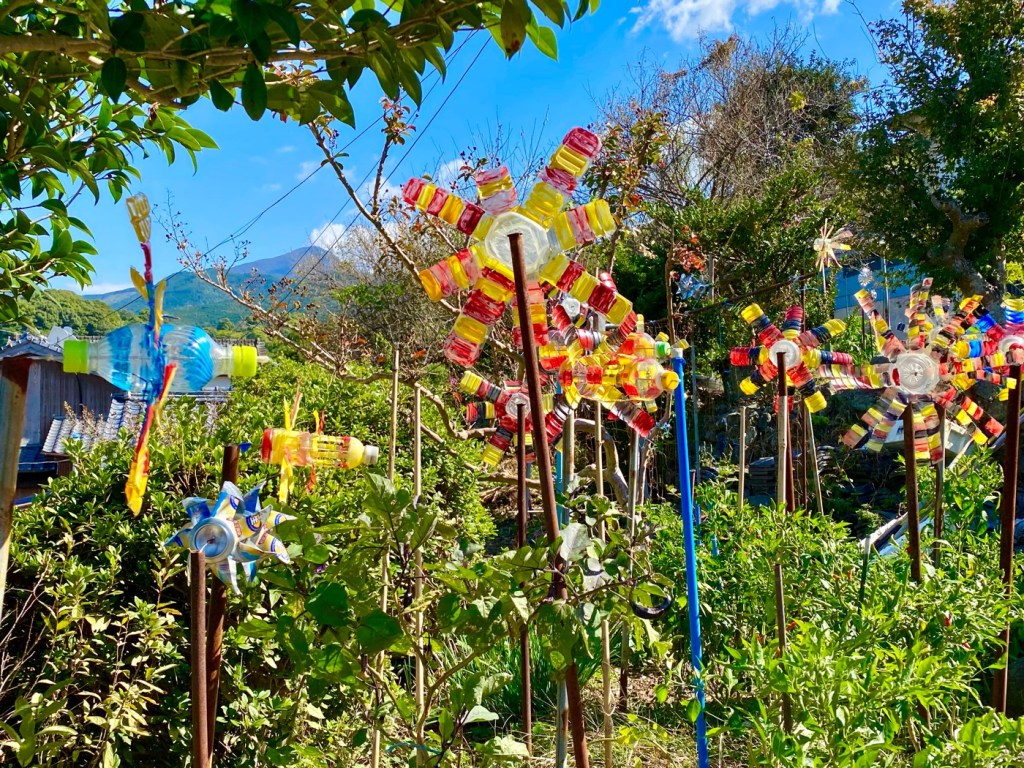





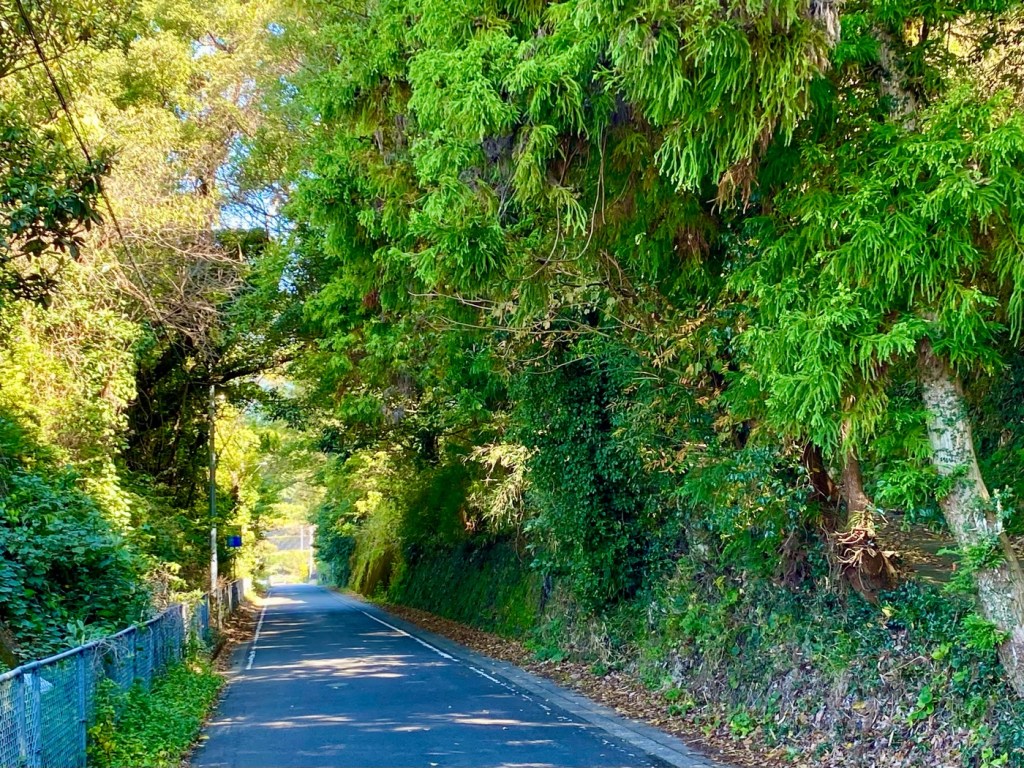


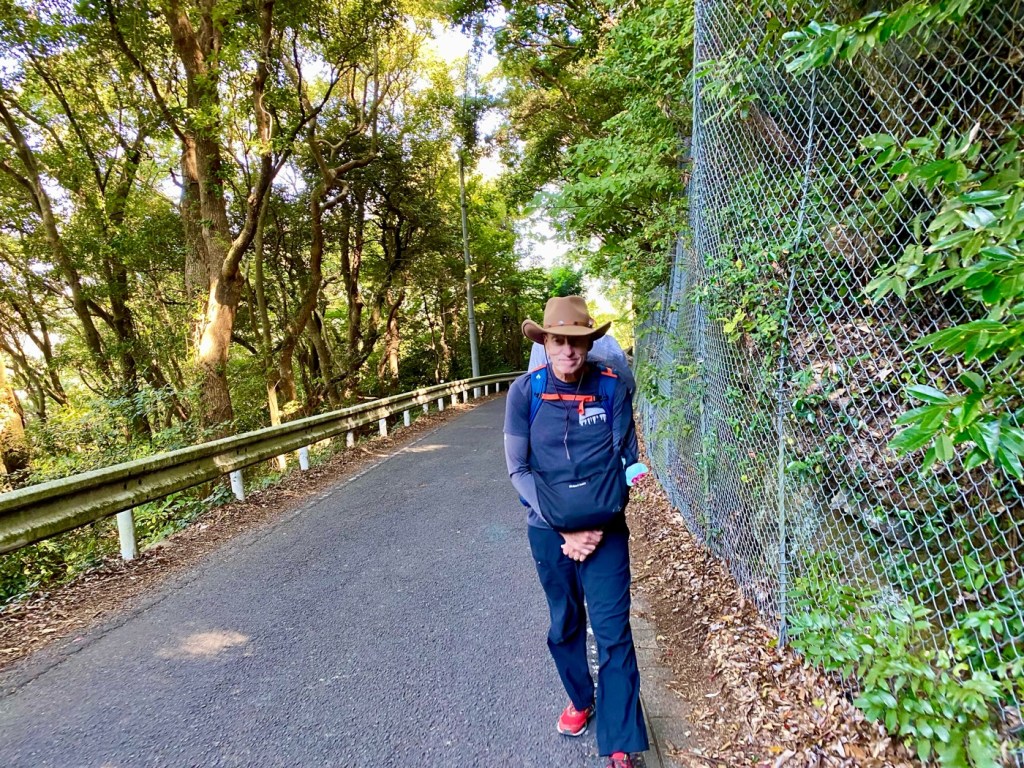






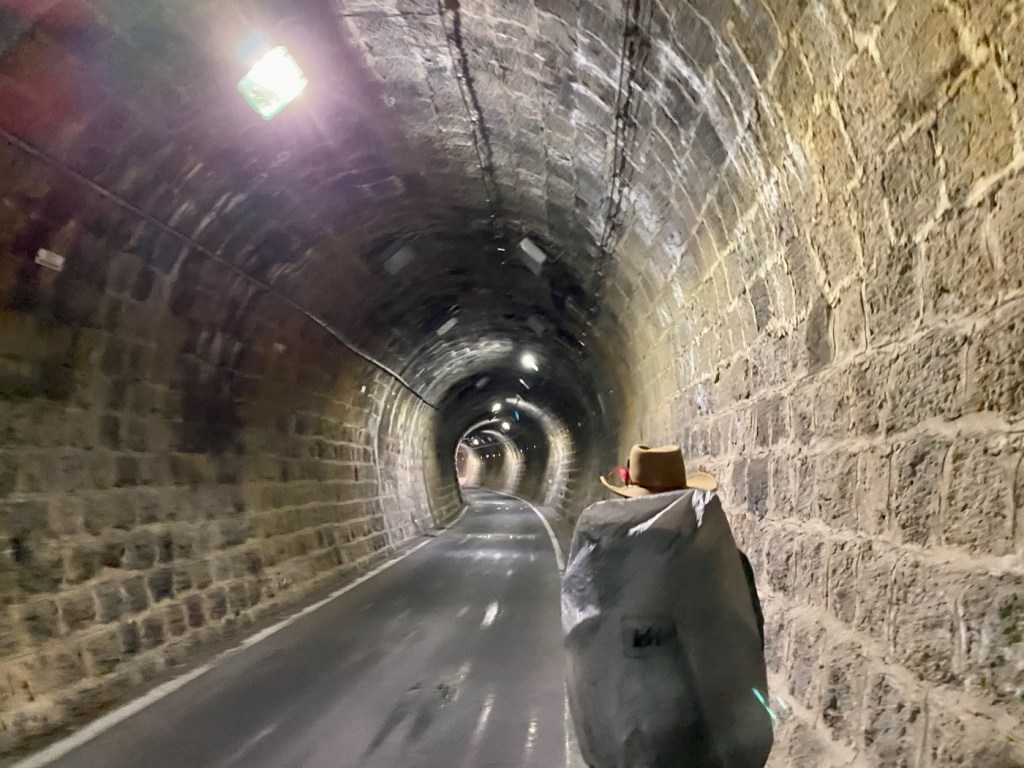




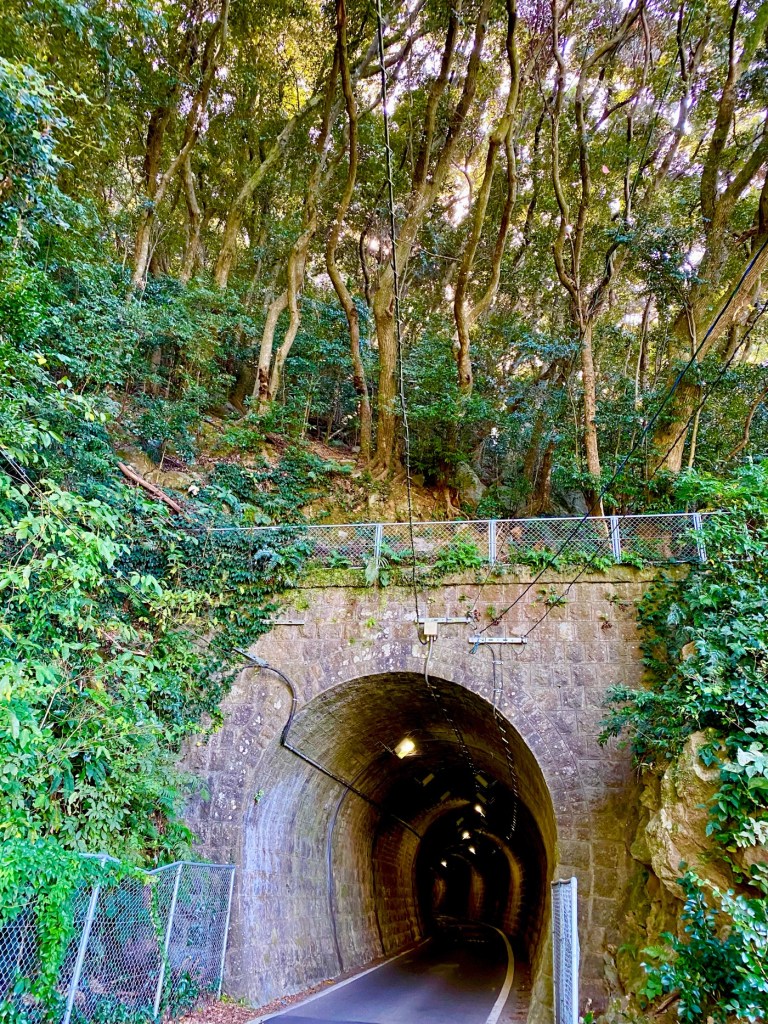

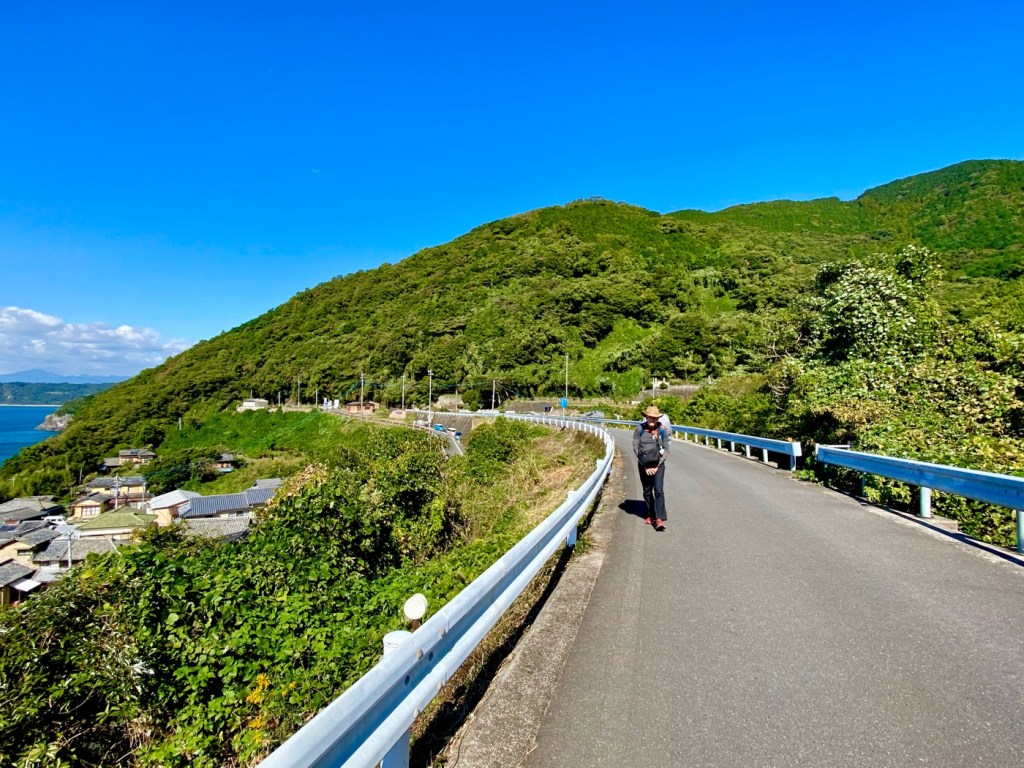
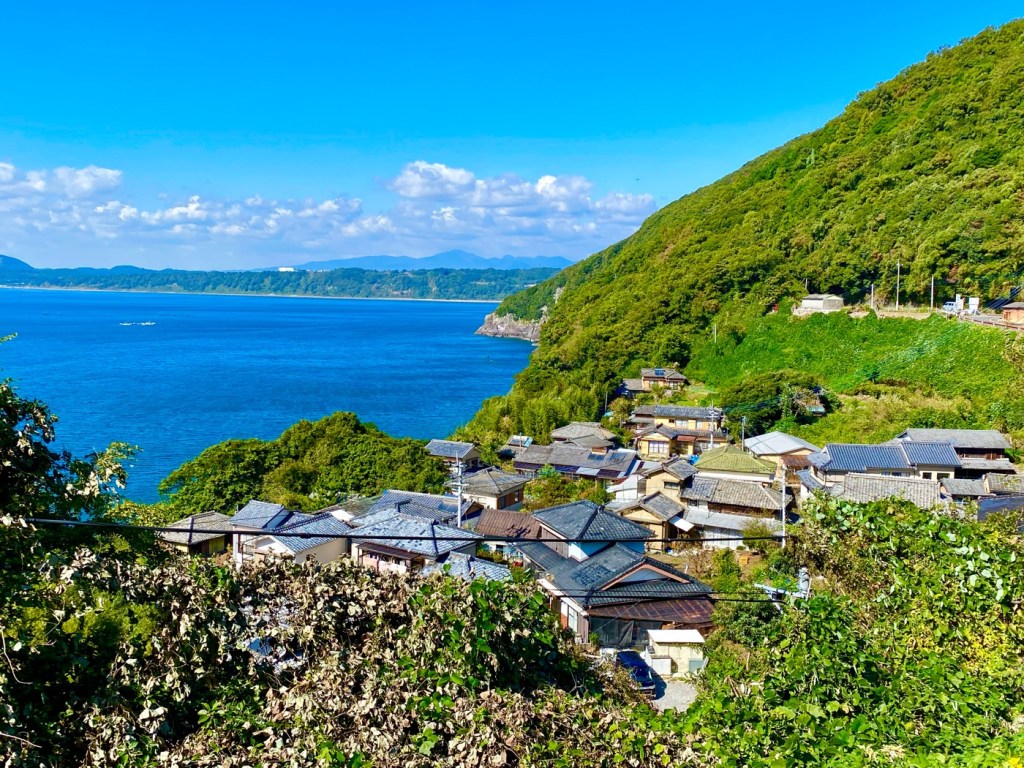





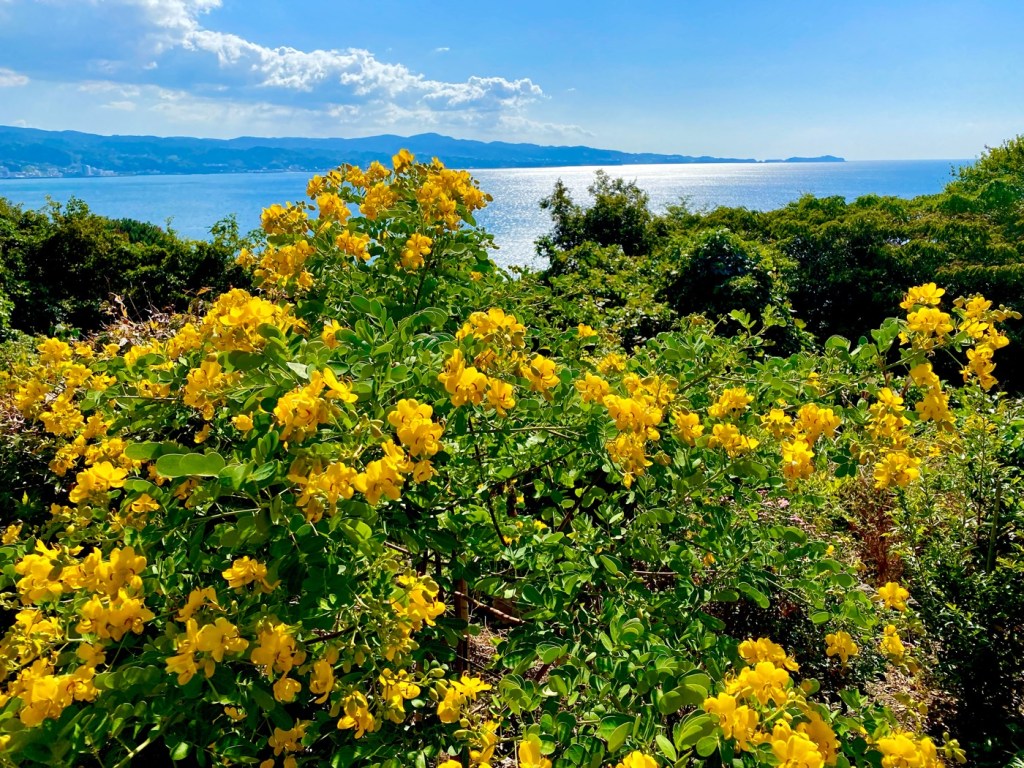


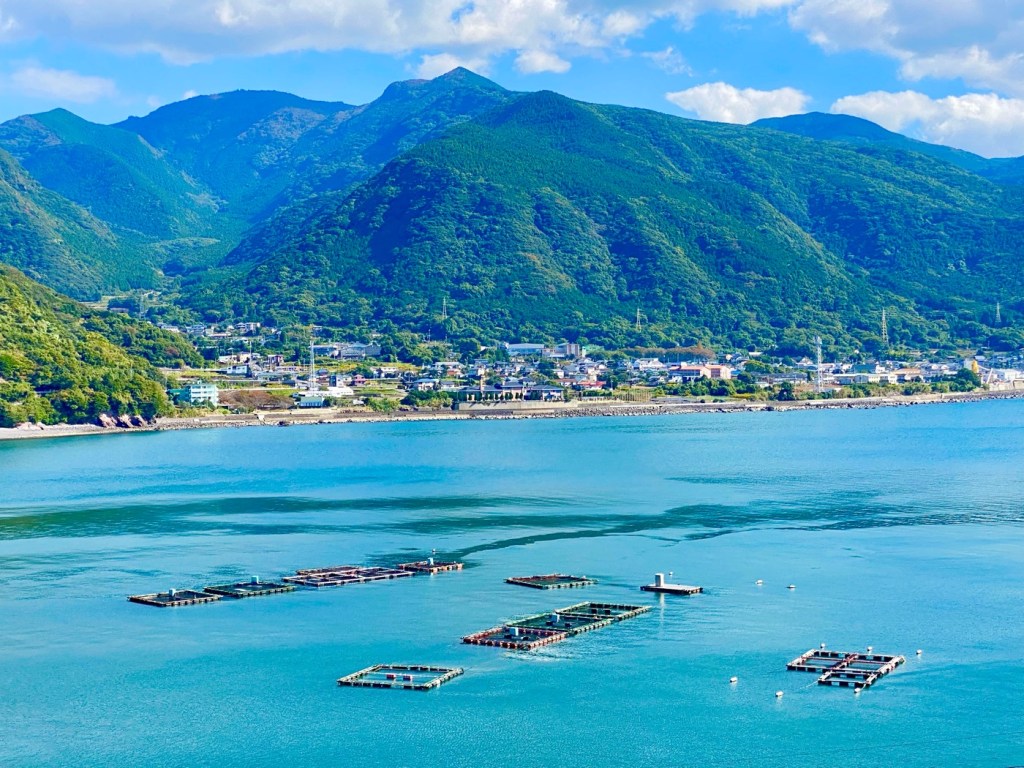


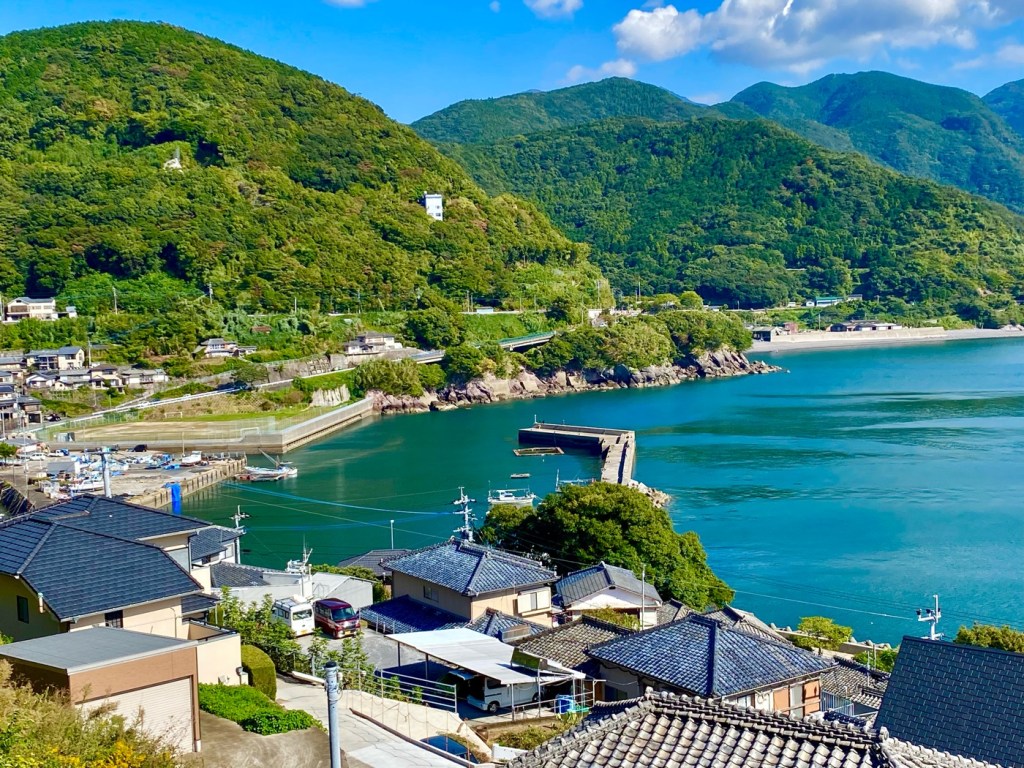
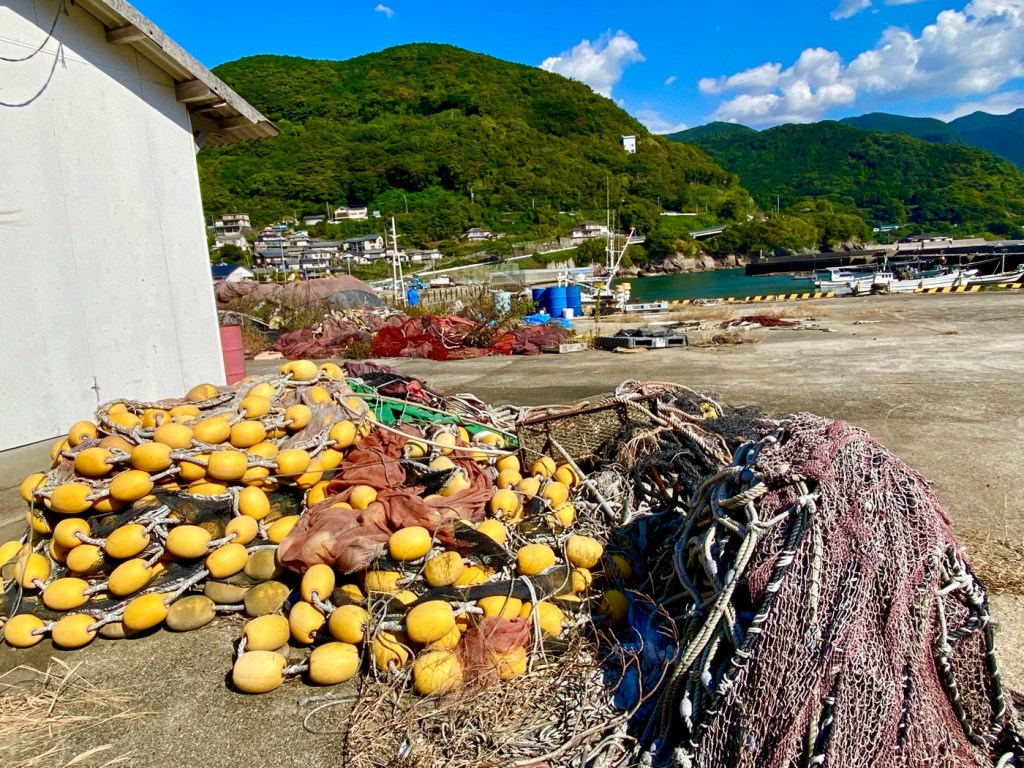



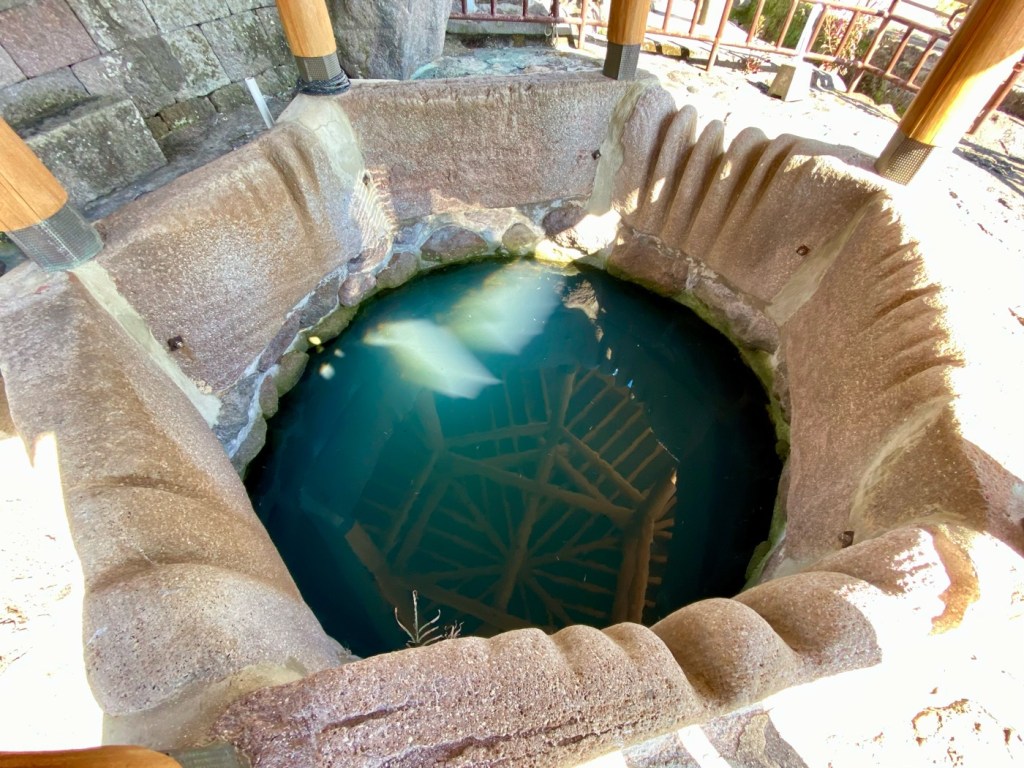




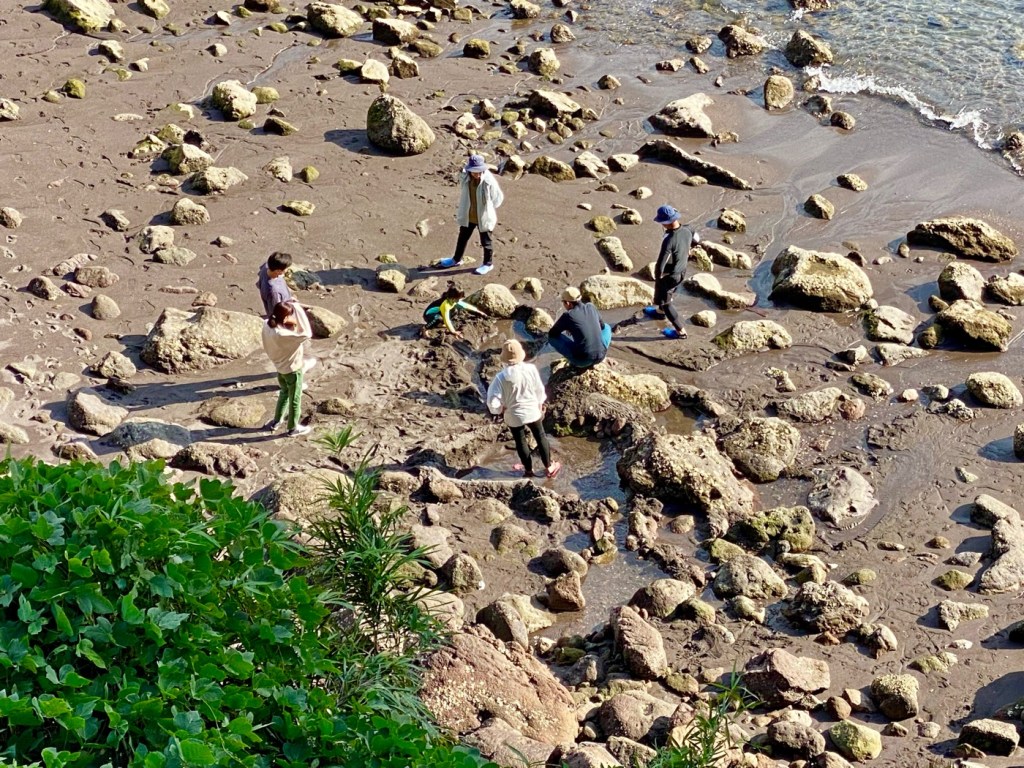





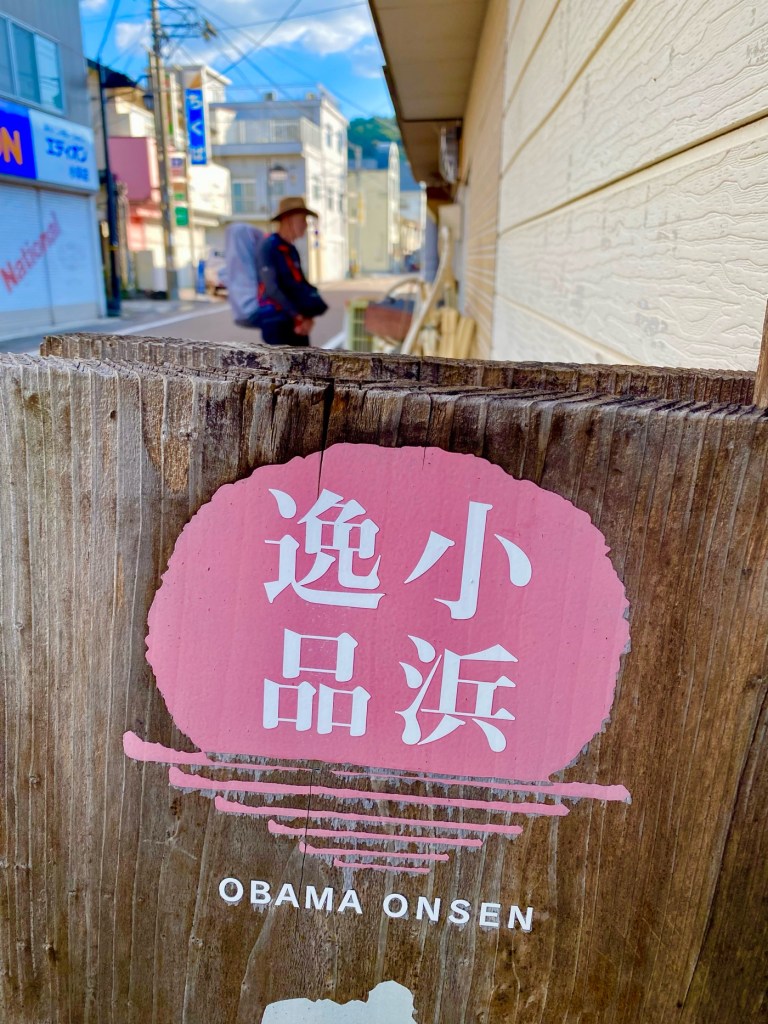










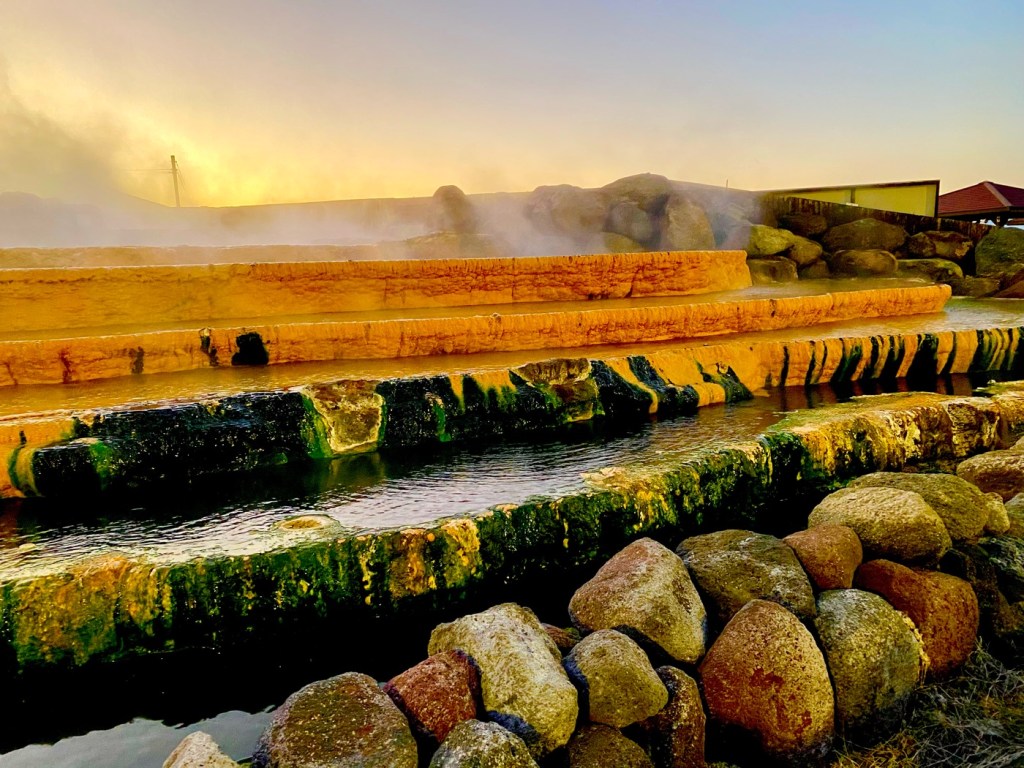

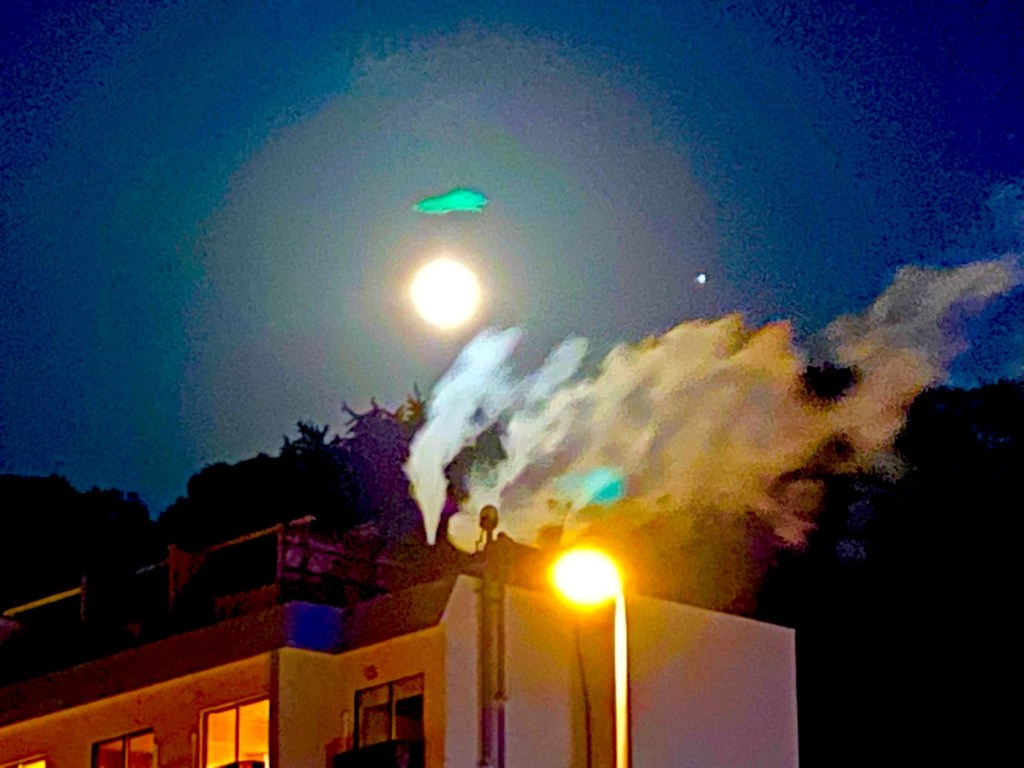
Day 35 - Walking Along The Old Railroad Line To Obama Onsen, The Kyushu 108 Temple Pilgrimage, Japan
We got up early in order to eat breakfast and to start walking earlier in the morning.
But a huge group of tourists had just finished eating their breakfasts, so we had to wait until the breakfast crew cleaned the tables and replenished the buffet.
We had a healthy and low calorie breakfast of fresh tofu with soy sauce, miso soup and an array of slow cooked vegetables, pickled vegetables and a salad of raw vegetables.
Since we had already walked from Isahaya to Nagasaki, we took a bus back to Isahaya and started walking along the coast.
The old road was once a railway line.
Its history includes two railway companies, one of which
had built the Onsen Railway, which ran between Aino and Chijiki, and the other had built the Obama Railway, which ran between Chijiki and Obama.
The Onsen Railway was established in 1920 and the construction of the railway tracks was completed in 1923.
The Obama Railway was founded in 1921, one year later than the Onsen Railway, by Mr. Chikamune Honda, who was a landowner in Obama.
Selling all his personal belongings to finance this huge project, he carved out a rocky area on a steep slope and set out to build the railway.
Construction was completed in 1926 at the huge cost at the time of 1.1 million yen, and the long-awaited railway opened in 1927.
In 1933, the two companies merged and changed their names to the Onsen Obama Railway.
The train journey spanned only 17km from start to finish, stopping at nine stations, and took about an hour and a half.
However, business fell into a slump due to the development of a new car-road and the availability of affordable automobiles, so people stopped using the local train.
The train tracks were demolished in 1938, after the trains had run for only eleven years.
It is now used as a scenic road, yet it still connects villages scattered along the old train line.
We enjoyed the coastline and walking through the coastal villages.
There were very few cars, a few cyclists and a few motorcycles.
We saw hawks flying over the mountains, and crossed a few stone tunnels, once used by the train.
We had no sidewalks, but the tunnels were very short.
Then we left the old train road and walked along a stone boardwalk by the beach.
I met a young man who had come all the way from Fukuoka, just to fish here for one day.
We talked about walking around Kyushu. He found it hard to believe that anyone would want to do it.
He asked if we hitchhiked sometimes, and I said that we do not hitchhike nor accept rides when they are offered.
We took a rest at an organic farm shop that also had a cafe.
They made tiny watermelon muffins, studded with watermelon seeds.
We also bought a package of dried oranges, and two matcha lattes, which we drank while sitting outdoors in the shade, and resting our feet.
I was happy to see that I was feeling better today, having no problems walking with my heavy backpack.
The walk continued to be wonderful, with some serious hill climbing through really steep mountain villages with very small narrow alleys and roads.
We passed by a hexagonal well, that is said to have been created by Kobo Daishi on his pilgrimage around Kyushu island.
According to legend, Kobo Daishi (Kukai) stopped at Tomitsu village during his pilgrimage through the country, and asked for water from an old village woman.
The old woman answered kindly that she would be happy to bring him some water, but he would have to wait a long time until she returned from the well.
When Kukai understood that the there was no well nearby, he hit the ground with his walking pole and divined a source of water.
Because his pole had a hexagonal tip, the well is in this shape.
Kukai saved the residents from hardship, and the same spring water still bubbles up here today.
It is always nice to hear stories and have glimpses into the miracles Kukai performed, while we walk our own pilgrimage in his footsteps.
At lunchtime, after climbing a mountain pass, we stopped for lunch at a cafe advertising that they made Onsen potatoes and used only organic vegetables.
They also ran a small shop selling handmade scarves and cute crafts.
The Onsen potatoes are first steamed in a wooden steamer over very hot spring water.
Then they are roasted and crisped.
We ordered two portions of Onsen potatoes and a salad.
They were so delicious that we ordered one more and another salad.
They were preparing for a full moon viewing that evening, which includes a matcha tea party.
We thanked them for the delicious lunch, put on our backpacks and walked down the mountain to our hotel.
As we walked through the streets of Obama onsen, a man stopped his car and offered us a ride.
We thanked him very much, but refused his generous offer of a ride.
We arrived at our hotel tired but happy.
We took off our shoes at the entrance to the Ryokan hotel, and put on the indoor slippers.
Our shoes were locked away and they will be put out for us again when it is time for us to go out for dinner.
The hot springs town of Obama is located in the foothills of Mount Unzen Volcano.
Tomorrow we will be climbing up the very steep road to the hot springs town of Unzen, nearly at the top of the volcano.
In Japanese, the word, "Obama" means "A little beach" or "A little island".
Obama Onsen was established in 713.
It is fed by 30 hot springs that run as hot as 105°C.
The hot springs system is known for having the hottest and most active springs in Japan.
The springs produce over 15,000 tons of hot water daily.
Looking out over Tachibana Bay, Obama Onsen offers one of the most popular places in the area to see a spectacular sunset.
Soaking in these chloride-based waters is said to treat everything from rheumatism to neuralgia to stomach disorders.
Our old Onsen hotel is a bit rusty, but it is very charming.
We got a lovely traditional tatami mat room with a seating area by the window.
We made some tea and relaxed, before changing into our summer kimonos and going to soak in the hot springs bath.
The hotel did not have a laundry room, so we collected our clothes and went to have dinner out and do our laundry in the small town.
It was getting dark and colder, so we wore our fleeces and walked to the waterfront to see the center of the hot springs with cascading pools covered in mineral buildup.
We saw many people sitting, dangling their legs into the very long foot bath, famous for being the longest foot bath in Japan.
Local women dressed in aprons were cooking eggs and steaming sweet potatoes in the Onsen waters.
I was so tempted to buy an onsen egg or a sweet potato, but I arestrained myself, because I wanted to try the local specialty food.
Obama Onsen is famous for its Obama Champon, a dish made of noodles, seafood, and vegetables.
The onsen town has a few restaurants, serving interpretations of Obama Champon.
Shrimp are found in abundance along the beaches near the onsen, and a special soup broth is made from them, and then the Champon noodles are added with an array of vegetables.
We ate two kinds of champon noodles.
Jules ate them stir fried with vegetables and I had the soup broth with roasted oysters.
Both were delicious and served with a condiment that I love, spicy Yuzu lemon with herbs.
We put the laundry in before dinner, and after our delicious meal we returned to collect our laundry.
Vapors of steam were rising from every onsen, every hotel and every guesthouse around town.
The moon was big and shining bright.
It was truly a magical night.
In our room, we doubled the futon mattresses on the tatami mat floor and went to bed early.
We have a big day tomorrow of a steep mountain climb, rising about 750 meters above sea level into the Unzen volcano.
Plus we have to carry our heavy backpacks, because the day after, we will be climbing down on the other side of the volcano, into the town of Shimabara.
With love and Champon noodles,
Tali
Stats: 28,470 steps
Today’s walk: 19 km
Kilometers walked to date: 580
Temples visited: none